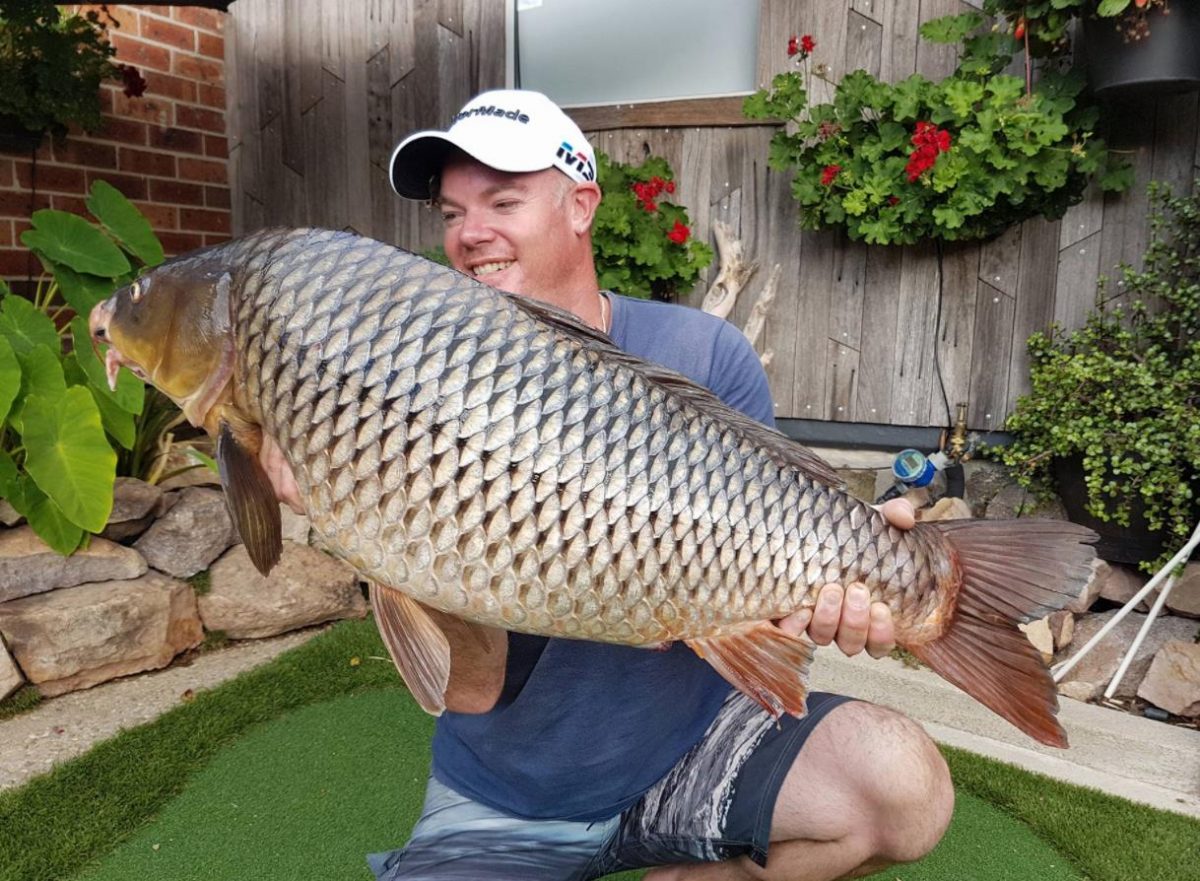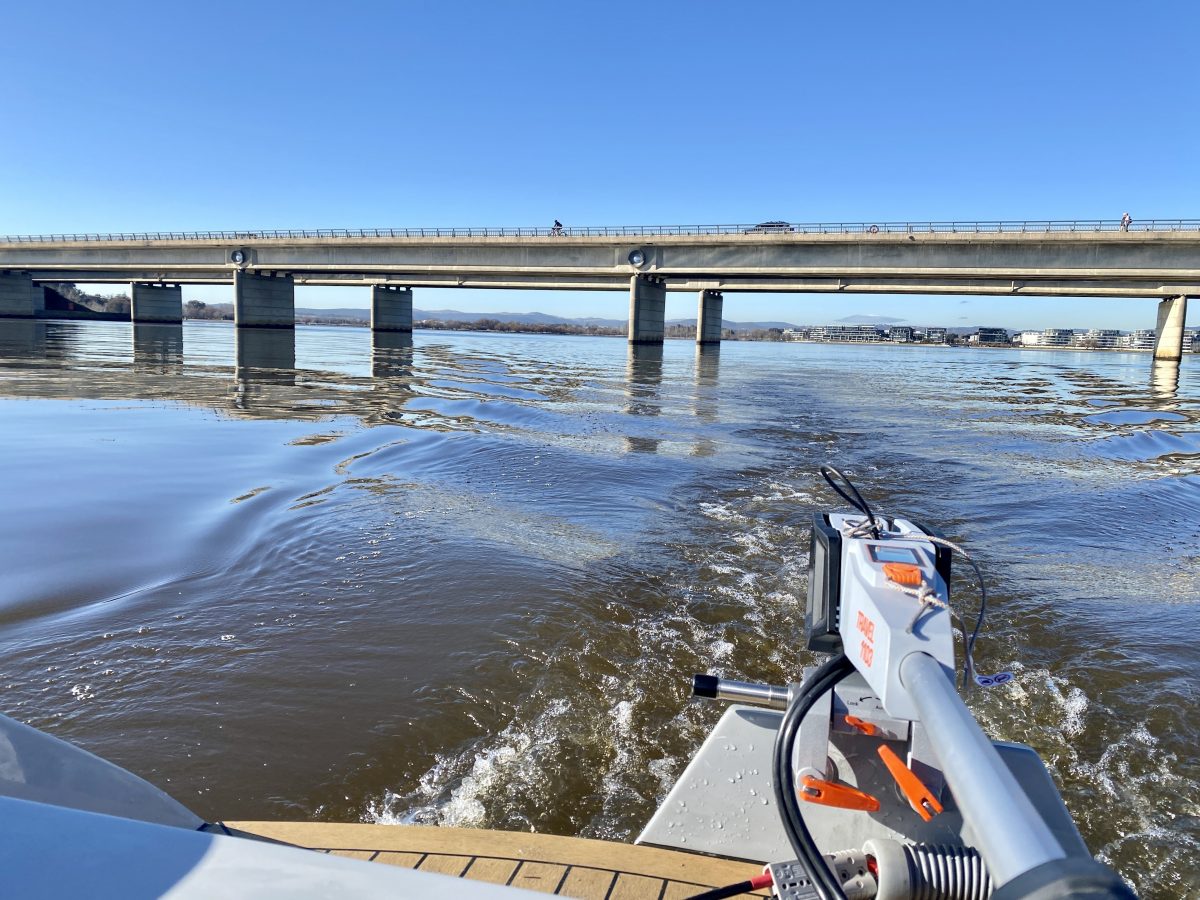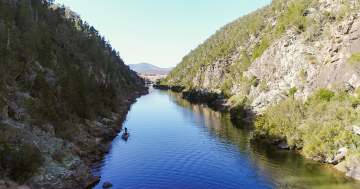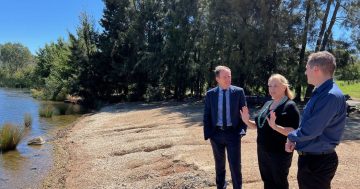
A carp caught in Lake Tuggeranong. Photo: Fishing Canberra.
Canberra’s pesky carp could be destined for extinction if a controversial virus gets the tick of approval.
The Australian Government first announced plans to release cyprinid herpesvirus 3 (or koi herpes virus, KHV) into a hot spot of the large and slimy fish in the Murray-Darling Basin in 2016.
The DNA-based virus has already been deployed in 33 countries and targets the species most prevalent in Australia, ‘common carp’ (Cyprinus carpio). Death occurs within 24 to 48 hours of exposure; those that survive remain infectious for the rest of their lives.
Australia’s plan to use it was knocked back in 2020 for fears millions of fish dying all at once would create more problems than it solved. But two years later and the $15 million ‘National Carp Control Plan’ (NCCP) has been handed down for all the states and territories to reconsider.
The ACT Government’s Environment, Planning and Sustainable Development Directorate (EPSDD) is reviewing the plan for local application, but it won’t be soon.
“We note the NCCP is not conclusive and proposes further work to be confident the virus is safe and effective before any release,” a spokesperson said.
“All jurisdictions and the Australian Government will need time to consider the NCCP before deciding whether or not to progress with the biological control program. EPSDD looks forward to being part of this process.”
While we wait, is there another way to curb the carp?

Carp muddy the water while searching the sediment for food. Photo: James Coleman.
The thought might turn the stomach, but Canberra ecologist Danswell Starrs has attempted to catch and eat carp multiple times and holds out hope for the future.
“I find the bones particularly obnoxious – they’ve got these little Y-shaped bones that are really good at sticking into your mouth,” he says.
The bones aren’t the only problem. It’s also the taste, which has a lot to do with why carp are considered a pest in the first place.
Dan describes them as “ecosystem engineers”. That’s not a compliment.
“They’re bottom-feeders, so they fumble around the bottom, sucking up bugs and plant matter.”
But in the process, they kick up sediment and muddy the whole water column. This provides algal blooms on the surface with plenty of nutrients, further destroying the water quality. Less and less sunlight then reaches the bottom, cutting out water plant growth.
“If the water is turbid and muddy, a whole range of issues kick off from that,” Dan says.
“Carp makes a bit of a mess, ecologically.”
Australia’s species are thought to have been introduced from Europe about 150 years ago but weren’t really a pest until the 1960s when they ended up in a Victorian fish farm and from there into the Murray-Darling Basin.

Canberra ecologist Danswell Starrs. Photo: Danswell Starrs.
“The prevailing understanding is they were accidentally introduced to Lake Burley Griffin when it was stocked with native fish soon after it was filled in 1964,” Dan explains.
“Unfortunately, many of these tank loads of little native fish came from the Murray Darling basin and were contaminated with carp.”
Conditions were good, so numbers exploded. Dan says that by weight, “they’re quite likely to be the dominant species” in Lake Burley Griffin.
There has been no shortage of attempts to get on top of them, but there’s still no silver bullet.
The Canberra Fisherman’s Club hosts annual ‘Canberra Carp-Out’ competitions to remove carp from local lakes while raising funds to buy native fish fingerlings to replace them.
“It’s a very easy pastime for children and families to go out and catch carp – they’re very easy to catch,” Dan says.
But the reality is, it’s a drop in the ocean. So what if we ate them?
This is when catching becomes an art because carp release histamine when stressed which charges the meat with a muddy, dirty taste. They must be caught, killed and iced as quickly as possible to avoid this.
“I’ve tried multiple ways, including keeping them in clean water tanks to purge some of that muddy flavour out,” Dan says.
“Unfortunately, none really worked.”
Other cultures appreciate carp for its protein more than anything and grind it up and lace it with herbs and spices to mask the flavour. Dan says we might have to take a similar approach.
“We Anglo-Australians are very used to catching fish from the coast and just preparing it and eating it the way it is … But we do need to diversify where our meat comes from and maybe carp could be part of that solution.”














